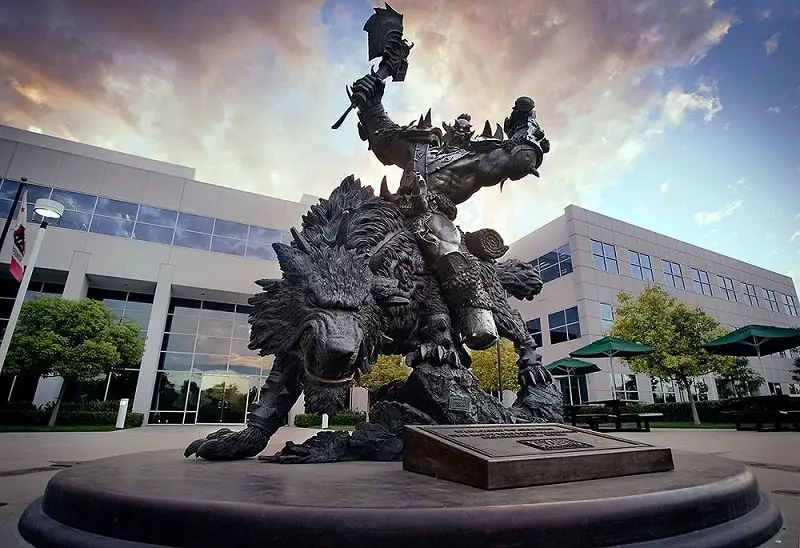Salary, Job Description, How To Become One, and Quiz
.jpg)
Storyboard Artists
Storyboard Artists work with the Director to break down a script into individual scenes. They illustrate a sequence of hand-drawn or digitally manipulated images to visualize the story.
Table of contents
Storyboard Artists draw visual representations of major scenes in a script, breaking the story down into individual panels. They may provide an outline of the sequences involved in an action scene or capture the intended poses of characters.
Storyboard Artists frequently work as freelance contractors, offering their services to individual film productions. This requires Storyboard Artists to constantly seek new work and maintain a portfolio of their past projects. Storyboard Artists also need to network and look for work outside of the film industry.
While Storyboard Artists often work for film productions, they are also employed in advertising, game development, publishing, education, architecture, and many other industries.
What they do
Storyboard Artists work with the Director to break down a script into individual scenes. They illustrate a sequence of hand-drawn or digitally manipulated images to visualize the story.
Collaborate with the pre-production crew
Before sketching the storyboards, the Storyboard Artist meets with other members of the pre-production crew. The Director, Producer, and Production Designer discuss the visual style of the story and the areas of the script that require storyboarding.
The Storyboard Artist typically receives specific notes or guidelines. For example, the Director may discuss the pacing of a scene or the position of the cameras when filming characters. Storyboard Artists use this information to understand the requirements for the current project.
Draw a thumbnail pass of the storyboarded scenes
Storyboard Artists may draw a rough draft of the storyboards before creating the final panels. They incorporate the suggestions of the Director to create an initial outline of each scene.
The rough draft is sometimes called a “thumbnail pass.” It helps ensure that the Storyboard Artists understand the needs of the project.
After creating the rough sketches, the Storyboard Artist meets with the Director to review the panels. They go through each sequence while taking notes for revisions.
Develop the final version of the storyboard
Based on the input of the Director, the Storyboard Artist begins developing the final storyboards. They hand draw the storyboards or use computer software to generate detailed panels.
The detail of the storyboards also depends on the type of project. When working in animation, Storyboard Artists may need to create storyboards that can be edited together to create an animated draft of the project.
Break action scenes into individual sequences
When working on the storyboard, the Storyboard Artist may need to break scenes into individual sequences, especially when illustrating an action scene. Storyboard Artists may work with other crew members to develop these sequences. For example, they may receive input from Fight Coordinators or the Director of Photography.
Represent the camera angles and lighting for each scene
Storyboard Artists occasionally have the freedom to choreograph the scenes, choosing camera angles and the direction of the lighting. They need to consider where the camera is shooting from and incorporate the use of shadows to represent lighting conditions.
Storyboard Artists are often required to understand shot composition, lighting techniques, and other elements of filmmaking.
Capture the emotions or facial expressions of characters
Along with representing camera angles and lighting, Storyboard Artists illustrate the characters. They may need to capture the emotions, facial expressions, and movements of the characters in each scene.
Storyboard Artists may also incorporate props or set designs into the storyboard panels. It is also common for storyboard panels to include space for text. In some cases, the storyboard panels include technical notes or lines of dialogue to make the illustrations clearer for the rest of the creative team.
What is the job like
Pros
You get to create illustrations for a living
Storyboard Artists get to draw and create illustrated sequences for a living, relying on their artistic abilities.
You contribute to the overall look and pacing of a production
The choices that you make may influence the camera angles, lighting, and overall look of the project.
You get to help develop film and television productions
Working as a Storyboard Artist can be an exciting career choice for film and television fans, as you get to be part of the creative process.
You get to read scripts before they are made into films
The Storyboard Artist is often one of the first individuals to read a script, giving you the chance to read stories before they reach the public.
Cons
You may occasionally receive negative feedback
Storyboard Artists occasionally deal with negative feedback from Directors, which can be a little discouraging.
You rarely receive recognition for your work
Storyboard Artists appear in the credits of film and television productions, but they rarely receive recognition for their work.
Where they work




Storyboard Artists are needed for a wide range of projects, including film, television, and stage productions. They are often hired by television studios, production companies, or animation studios to storyboard the script before production starts.
Storyboard Artists also frequently work outside of the film industry, creating storyboards for game development companies and advertising agencies. They may also find employment with companies involved in graphic design, publishing, education, architecture, or health care.
How to become one
Step 1: Develop your artistic skills in high school
Aspiring Storyboard Artists should work on their drawing skills in high school. Take an art class and read books on the subject.
Step 2: Earn a Bachelor’s degree
Employers typically require Storyboard Artists to have a Bachelor’s degree. If you plan to work in the animation industry, you may want to complete a Bachelor of Fine Arts (BFA) program in Animation. Graphic Design and Sequential Art are also common fields of study.
Step 3: Look for entry-level Storyboard Artist positions
After graduating, start looking for work as a Storyboard Artist. You may need to start with small productions, such as independent films or advertising projects. Offer your services as a freelancer to gain more work experience.
Step 4: Build a portfolio of the projects you have worked on
Storyboard Artists use their portfolios as a resume. Start building your portfolio to showcase your talents to prospective employers. As you gain more experience and develop your portfolio, you should be able to find jobs on bigger projects.
Should you become one
Best personality type for this career
People with this personality likes to work with designs and patterns. They prefer activities that require self-expression and prefer work that can be done without following a clear set of rules.
You can read more about these career personality types here.
Storyboard Artists need strong listening skills to collaborate with Directors and understand their vision for the overall style of the project. Storyboard Artists also need to be able to accept constructive criticism and feedback, as Directors may frequently request revisions to the storyboards.
Storyboard Artists are also typically good storytellers, as they need to translate a written script into a sequence of illustrations. You may also find this job more appealing if you are comfortable working with a diverse range of individuals, as each project may involve a different Director and creative team.
Take this quiz to see if this is the right career for you.
Don’t know which career to pursue?
Take the career quiz to find careers that match your personality type.
Take The Career Quiz
.jpg)
.jpg)
.jpg)
.jpg)
.jpg)
.jpg)
.jpg)
.jpg)
.jpg)
